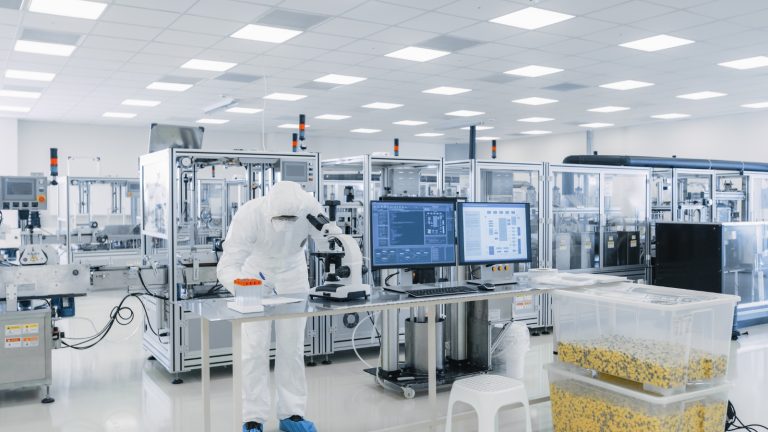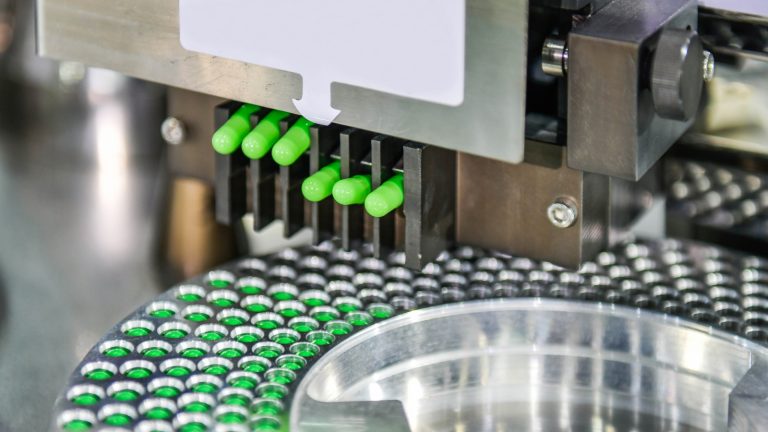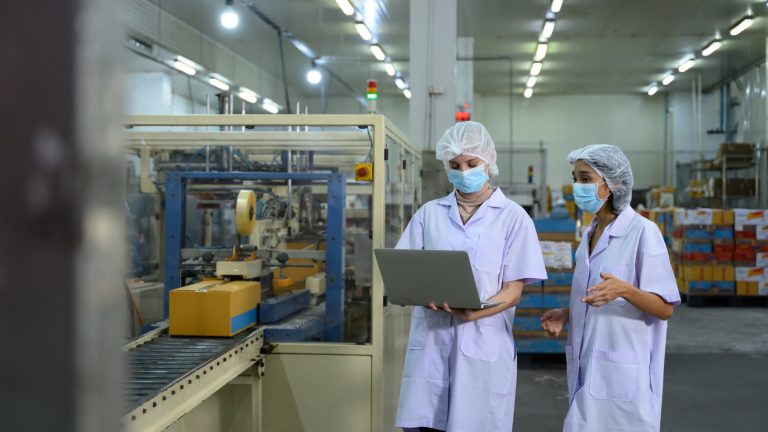What comes to your mind when you hear ‘a market that never sleeps’? It is undoubtedly ‘pharmaceutical manufacturing’. With new illnesses and strong bacteria rising day after day, this industry can never fall asleep. This is why the world health bodies and their regulations are putting a tight grip on this sector, as one small mistake in the production can lead to massive damage. However, manual product quality checks come with traditional limitations and pharma manufacturers can no longer rely on them. ‘Electronic Batch Records’ enters the picture under these circumstances.
In this article, we will discover how electronic batch records improve pharma manufacturing in today’s world.
What is ‘Electronic Batch Records’?

- Electronic Batch Records, commonly known as EBRs, are a virtual process of recording all the stages of making a product in the pharmaceutical industry. Gone are the days when this field relied on keeping records on paper and entering them into systems manually. Due to its advanced capabilities, electronic batch records instantly capture relevant data from various sources such as sensors, operators and machinery while the production mechanism is running.
- From ingredients, process actions, steps, measurements, to things, everything consolidates under one panel for real-time monitoring purposes. Due to ERB characteristics, the product records are 100% accurate, complete, and easy to inspect.
- One of the major reasons the pharmaceutical industry opts for such robust technology nowadays is that, as the regulatory landscape becomes quite uncompromising, there is a heightened requirement to follow quality standards. If they cannot comply with regulations, quickly finding mistakes and fixing them on time, they will have to face penalties for breaching quality standards.
- Plus, as the EBR systems come with additional benefits such as improving productivity, making the production efficient, error-free and reducing the costs for quality checks, many pharma manufacturers tend to integrate this straightforward technology in their production architecture.
5 Ways Electronic Batch Records Improve Pharma Manufacturing

Enhanced Data Accuracy
Many pharmaceutical companies around the world find electronic batch records to be an outstanding strategy to improve the accuracy of the data they generate. When it comes to the typical methods, they were mainly paper-based systems, and the pharma workers spent time recording each step of the production process manually. Since it depends mainly on human labour, there is a high potential for mistakes, which will lead to missing information or unclear records.
Once EBRs came into the picture, it revolutionised the whole landscape with automated data-capturing capacity. No matter whether the data is streaming from machines or production systems, they collect it in real-time, keeping no space for human errors. The system is powered to digitally track and record each step, ingredient, and measurement, and it automatically cross-checks them with pre-defined quality protocols.
With EBR programmes, pharma manufacturers receive the potential to track changes and review past batches without spending hours.
Regulatory Compliance
Pharmaceutical manufacturing is bound to adhere to the regulations imposed by authoritative bodies such as the FDA. Plus, it is another requirement for them to follow Good Manufacturing Practices (GMP), which are challenging with the manual approaches. When relying on paper records, they can be messy, incomplete, or hard to track. In the crucial events, it is difficult to prove compliance with such recording systems. However, since the EBRs are a digital configuration, it is straightforward to trace and keep time-stamped records of every batch.
The system comes with the capacity to enter automated logs about the facts, such as who did what and when. When there is an audit going on, they make audits much uncomplicated. This indicates that pharmaceutical companies gain the power to offer 100% accurate records on production methodology, material usage with quantities and percentages, and procedure frameworks to the regulators. Apart from this, EBR supports meeting standards for data integrity and documentation.
In this realm, regulatory compliance signifies the possibility of avoiding fines, production delays, or product recalls.
Faster Batch Release
As the quality inspections and end-to-end reviews all need to be done manually, it will take a lot of time for a pharma company to release a batch of medicine. The process keeps a slower pace when it comes to collecting paper records, checking them for mistakes and being signed by multiple authorities, etc. The EBR’s automation capabilities remove this blockage by speeding up the whole flow of data collection and validation with pre-established protocols.
As the latter can evaluate the measurements, process steps, and compliance in real-time, it is easier to give approval for a batch of medicines within a short period. If all the stages are errorless, there will be no need for the manual reviews. Also, it offers a clear digital trail to fix the issues quickly. This way, the companies do not have to hold up their productions. It is visible that EBRs reduce the production cycle significantly and help bring the medicine to the market faster.
Improved Process Visibility
In this industry, real-time visibility of the production process receives a lot of attention internally as well as externally. When it comes to internal formulation, the managers and operators can easily screen what occurs within each step of the production sequence. For example, there can be various issues such as machine error and measurement deviations. Since everything is monitored digitally, the authorities can detect them in real-time and take necessary corrective measures.
The problem with traditional paper-based systems is that they indicate the errors only after the entire production of the batch is completed. Not to mention that this delays corrective actions. If the EBR system is implemented, the managers and operators can look into the live production and make adjustments quickly. This would prevent mistakes from affecting the entire batch.
Operational Efficiency
In the traditional approaches, it would take hours of labour for writing, checking, and filing paper records. Not only is this slow and confusing, but it is prone to mistakes. However, now that many companies opt for EBR, it sort of standardises the complete operational workflow with its ability to digitalise every stage, in which the operators get step-by-step guidelines to follow for each phase.
With automated data capture and standard operating procedures, there is no need for repetitive work. Instead, it saves workers’ time. Since the electronic batch records offer digital records, the pharmaceutical companies can guarantee that every batch follows the same procedures. In one way, it improves quality and, in another way, it reduces material wastage. Operational efficiency and cost-efficiency are two interwoven elements, as with one rising, the other one rises in parallel.
Cerexio Electronic Batch Records System for All Manufacturing Domains

Not limited to the pharmaceutical industry, Cerexio offers an Industry 4.0-driven Electronic Batch Records System that can be tailored to any other manufacturing domain. Our software solution is enriched with advanced capabilities such as IoT, AI, Digital Twin, Sensor networks, etc., and it automates everything from data capturing, interpreting, checking for errors, to matching against pre-defined protocols, all under one dashboard. With Cerexio EBRs, you can ensure every production batch gets released with the same quality.
Enhancing Batch Production in Pharma Manufacturing with New Tools

Why do you waste your materials and other resources in medicine manufacturing when you can easily enhance the reliability of each batch with new-age tools? These tools are developed to fill the gaps of traditional manufacturing, and it is indeed a wise strategy to implement in your productions.
FAQ about Electronic Batch Manufacturing
EBR or Electronic Batch Record is a modern method of recording batches in production, and this digitalised system has the potential to document every step of manufacturing in industries like pharmaceuticals.
While both systems are employed in manufacturing, they are used for different objectives. MES is an end-to-end programme that manages production workflow from A to Z in real time. However, EBR is different from MES as it is known as a specific digital documentation format for data capturing, managing, and complying in batch productions.
In the manufacturing batch production, EBR’s automated reporting capabilities support the manufacturers with recording every detail of the batch for different compliance purposes.
